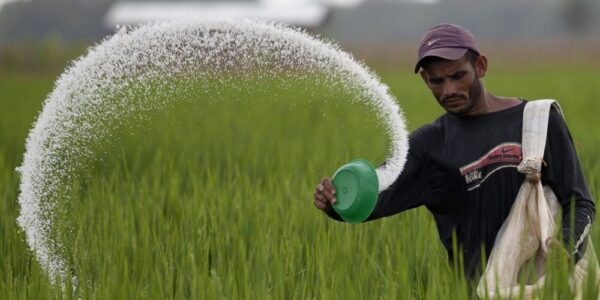India is World’s Second Largest Emitter of Nitrous Oxide
In 2020, the top five emitters of anthropogenic N2O were China (16.7%), India (10.9%), the United States (5.7%), Brazil (5.3%), and Russia (4.6%).
India ranks as the world’s second-largest emitter of nitrous oxide (N2O), a potent greenhouse gas that warms the atmosphere much more intensely than carbon dioxide. A global assessment published in Earth System Science Data reveals that nearly 11% of global anthropogenic N2O emissions in 2020 originated from India, second only to China at 16%. These emissions predominantly stem from the use of fertilizers in agriculture.
According to the study, atmospheric N2O concentrations reached 336 parts per billion in 2022, marking a 25% increase from pre-industrial levels. In contrast, atmospheric carbon dioxide, the most prevalent greenhouse gas after water vapor, measured 417 parts per million in 2022. Despite N2O being far less abundant than CO2 in the atmosphere, its longevity and rapidly rising levels necessitate urgent attention from the scientific community.
Over the past four decades, N2O emissions from human activities have surged by 40%, translating to three million metric tons annually. The growth rate in emissions between 2020 and 2022 was the highest recorded since 1980. Agricultural activities, particularly the use of nitrogen-based fertilizers like ammonia and animal manure, accounted for 74% of anthropogenic N2O emissions over the last decade.
* Click to Follow Voice of Ladakh on WhatsApp *
Scientists warn that these emissions contribute significantly to global warming, adding approximately 0.1°C to current temperatures. The study underscores that addressing N2O emissions is crucial for meeting climate targets, as unchecked emissions could lead to global mean temperature increases surpassing 3°C by the century’s end.
To align with the Paris Agreement’s goal of limiting global warming to below 2°C, the authors stress the need for a minimum 20% reduction in anthropogenic N2O emissions by 2050 compared to 2019 levels.
In 2020, the top five emitters of anthropogenic N2O were China (16.7%), India (10.9%), the United States (5.7%), Brazil (5.3%), and Russia (4.6%). Beyond contributing to climate change, N2O emissions impact ozone depletion and pollute water resources through the inefficient use of nitrogen fertilizers and animal manure.
The increasing demand for meat and dairy products has exacerbated these emissions by boosting manure production. Similarly, the use of nitrogen fertilizers in animal feed production has further fueled this trend. While emissions from agriculture continue to rise, those from other sectors like fossil fuels and chemicals have stabilized or declined globally.

0 Comments